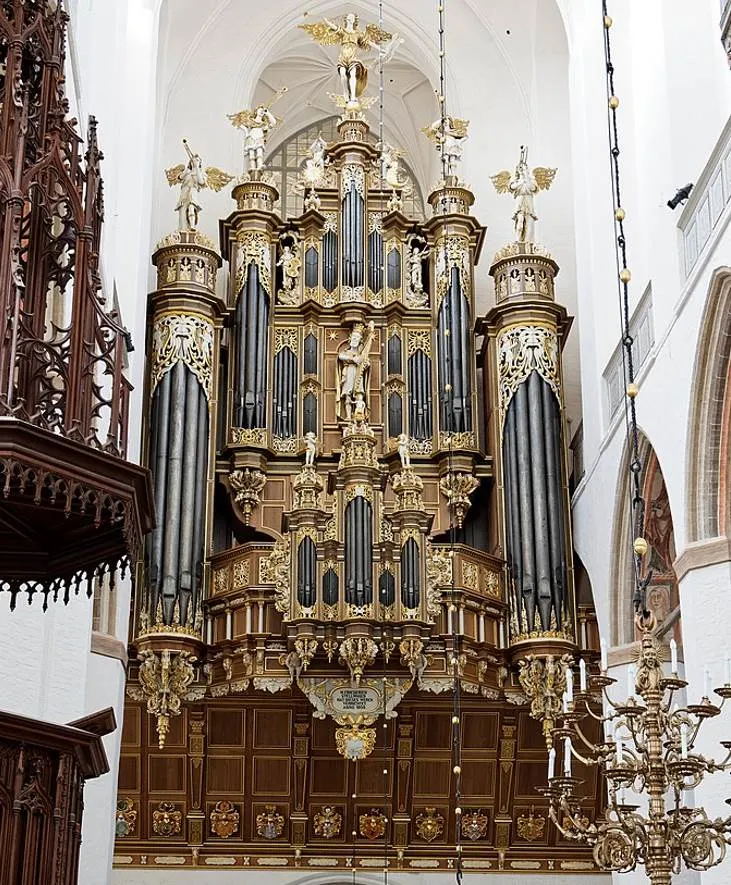The main idea of building a Gothic cathedral during the Middle Ages was to build it as high as possible.
Arches and spires that point toward the sky above were the defining characteristics of this medieval style that evolved from Romanesque architecture.
This makes it no surprise that several of these monumental buildings once topped the list of the tallest buildings in the world.
In this article, you’ll discover some of the most interesting facts about St. Mary’s Church in Stralsund, one of the buildings that achieved this record for an extended period.
1. It’s located in a city in the utmost northeastern part of Germany
St. Mary’s Church is a huge Gothic church located in the city of Stralsund. This city is located in the German state of Mecklenburg-Vorpommern in the northeastern part of the country.
The city is officially known as the Hanseatic City of Stralsund, a reference to the fact that this was an important trade center of the Hanseatic League. This was an important medieval confederation in the northern part of Europe.
The city is situated on the southern coast of the Strelasund, a sound of the Baltic Sea. The Strelasund Crossing is one of the most famous bridges in Germany and connects the mainland to the island of Rügen nearby.
The amazing church was constructed in the historical heart of the city and has dominated the city’s skyline for hundreds of years.

2. The original version of the building was completed before 1298
The city was an important training post of the Hanseatic League and this brought a lot of wealth during the Middle Ages.

Stralsund was part of the West Slavic Principality of Rügen back then and a lot of building projects were constructed in medieval times.
This part of the city is now referred to as the Old Town. The medieval buildings that make up this historic section of the city have been designated as a UNESCO World Heritage site in 2002.
What’s remarkable is that the original version of St. Mary’s Church was already completed before 1298. This is significant because Stralsund only became part of the Hanseatic League in 1293.
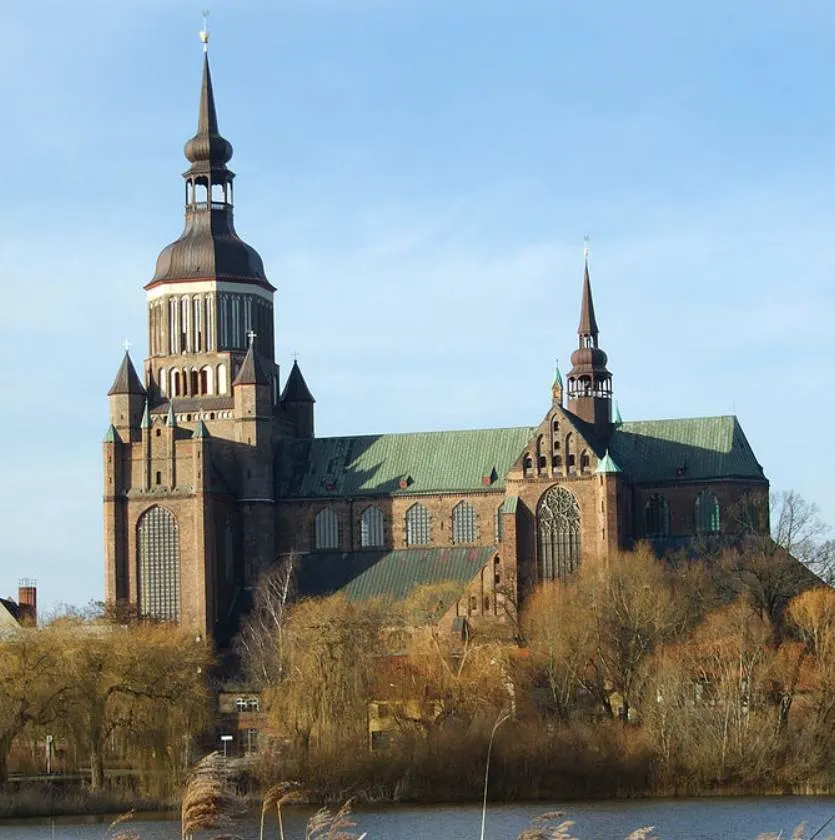
3. It’s one of several major churches constructed in this Hanseatic city
The Old Town of Stralsund features one of the most amazing medieval skylines in Europe. That’s mainly because it’s dominated by several churches that were constructed during the Middle Ages.
The most prominent church in the Old Town apart from St. Mary’s Church is St. Nicholas Church, another monumental Gothic building that was completed between 1234 and 1276.
This amazing church borders the old market square, the most important square in the city. Here you can also find the magnificent City Hall of Stralsund.
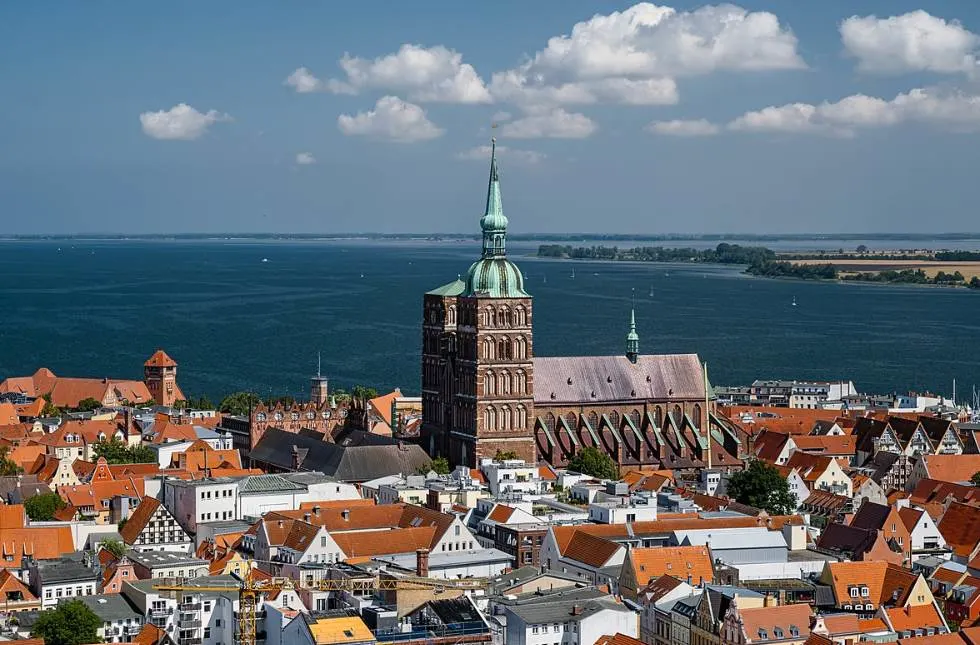
4. The building features distinctive northern European Gotic architecture
Both St. Mary’s Church and St. Nicholas Church in Stralsund feature the distinctive Gothic architecture that became the dominant style all across Europe during the Middle Ages.
While the core elements such as pointy spires and windows were used in structures all across Europe, the style manifested in different ways in various parts of Europe.
In northern Germany, the main building materials were red bricks. This is why all churches in the city feature a distinctive red color.
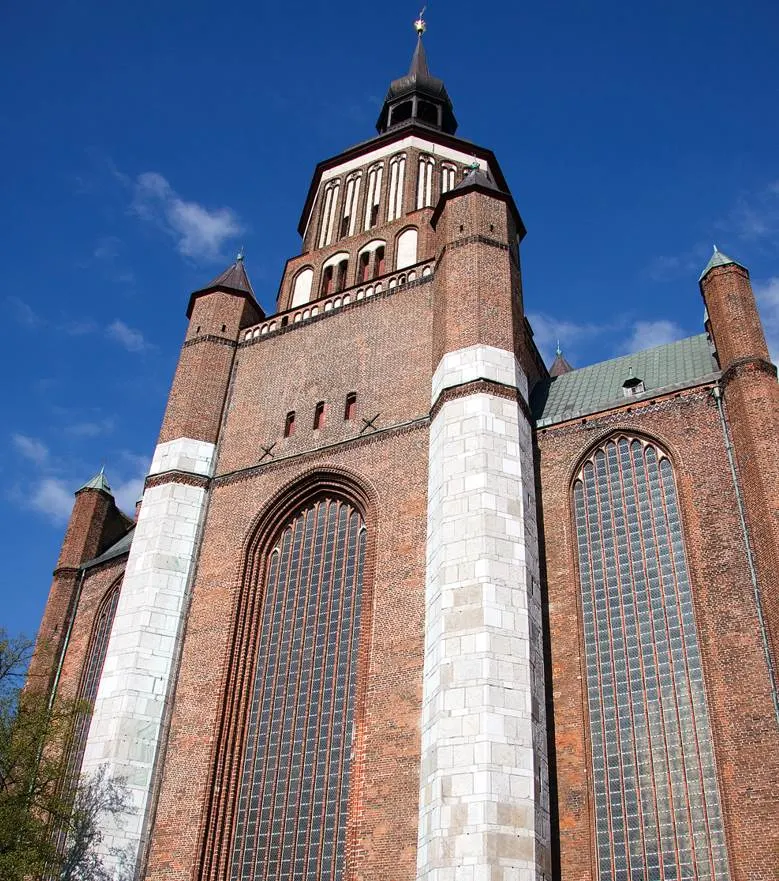
5. The original bell tower of the church collapsed in the late-14th century
The church has undergone several restoration phases, mainly because the tall bell tower of the church was destroyed on several occasions.
The original medieval bell tower collapsed in 1382. This was not surprising because the weight that these towers of Gothic churches added to the core structure was incredible.
The steeple was rebuilt by the year 1478, only to be destroyed once more in 1495 during a severe storm. It was finally rebuilt once shortly after.
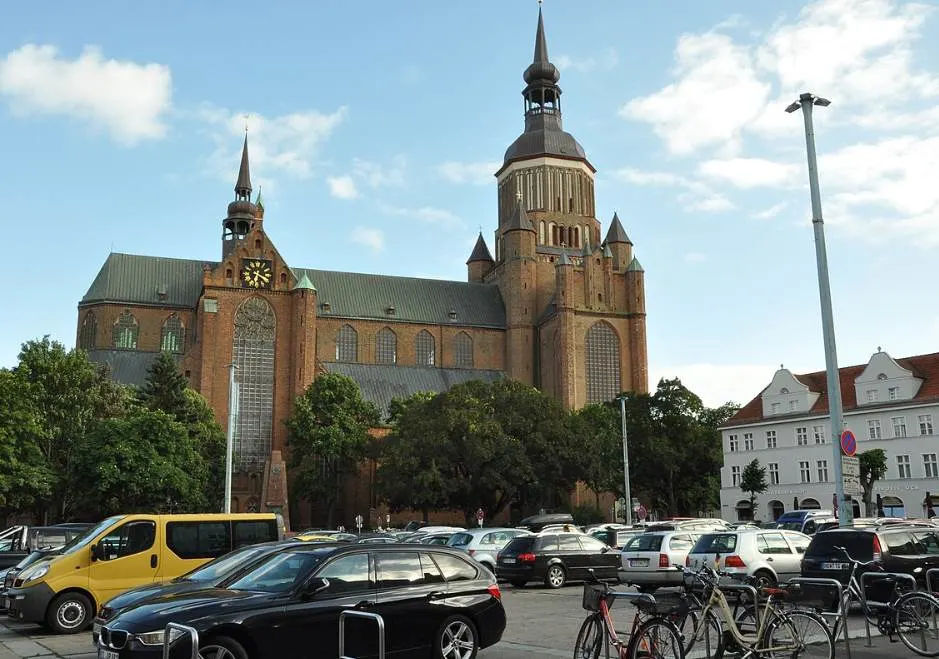
6. It became the tallest building in the world in the 16th century
The completed spire of St. Mary’s Church in Stralsund in the 16th century was so tall that it became the tallest building in the world.
It reached an incredible height of 151 meters (495 feet) which exceeded the height of the spire of Lincoln Cathedral. This spire was 160 meters (520 feet) tall but collapsed in 1548.
It also briefly lost the record between 1569 and 1573, the year that the spire of Beauvais Cathedral was completed and collapsed.

7. The spire that made it the tallest building burned down in the 17th century
The spire was of St. Mary’s Church destroyed by lightning in 1647 and lost its record to Strasbourg Cathedral, the tallest building in the world between 1647 to 1874.
Baroque architecture had already become the dominant style in Europe at the time and the current spire wasn’t rebuilt nearly as high as its Gothic predecessor.
It was replaced by the Baroque-style dome in 1708, an architectural element that we can still admire today.
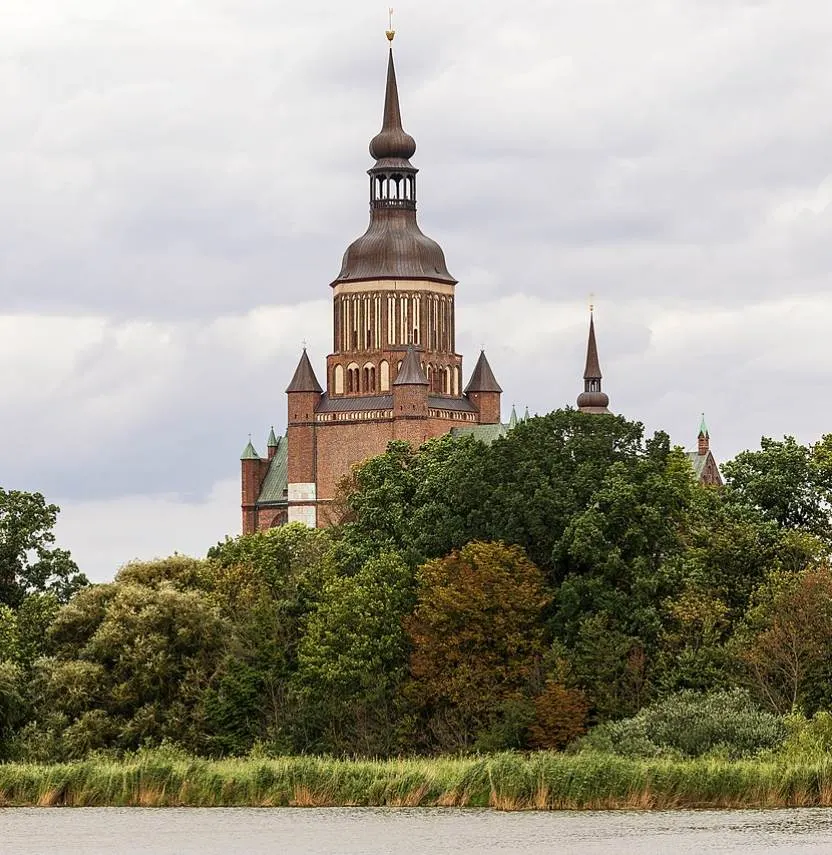
8. The interior of St. Mary’s Church in Stralsund is home to a remarkable organ
The interior of St. Mary’s Church in Stralsund looks rather ordinary compared to many other amazing churches all across Europe.
It is, however, worthwhile to enter the church because of the magnificent Baroque organ that is housed here.
It was designed by the renowned pipe organ builder Friedrich Stellwagen (1603-1660) who completed his Magnum Opus between 1653 and 1659.
The quality of his work is defined by the fact that the organ is still in excellent condition today.
